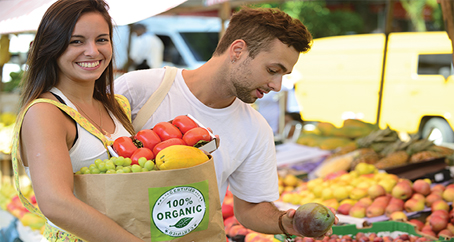“In eight years, we went from handling only conventional produce to 50 percent organics. Retailers would tell us that customers wanted more options, so we started converting acreage to organic. Now they’re outpacing conventional sales,” Munger shares. “Our top commodities are Brussels sprouts, green beans, spinach, sugar snap peas, and cilantro. We carry over 100 organic SKUs. We work with retailers so they can purchase everything they need even in smaller quantities.”
On the Rise, Regardless of Pricing
With the economy more stable than in years past, the higher cost of organic produce is of less importance to many consumers. The majority of U.S. suppliers have observed increasing demand for organic fruits and vegetables, but the need has not yet been met by producers so prices remain high. “With organic farming, the yield is about 50 percent of conventional crops,” Wilson explains. “The difference in yield is the reason for the additional mark up.”
Shane Stephens, organic buyer for Spokane Produce, Inc., a wholesaler in Washington state says, “Sales of organics are on the rise and even though prices are higher than conventional produce, they have become more reasonable in recent years.” And while it is certainly true pricing has leveled out on some items, tight availability still dictates prices on a broad range of items. Just such an examp



